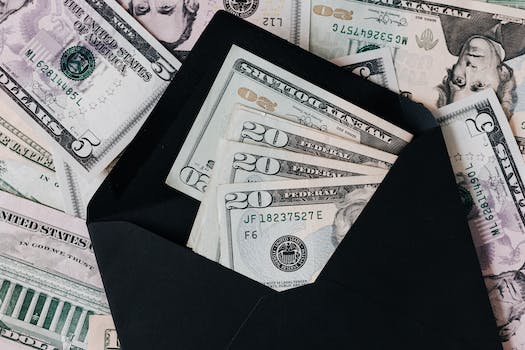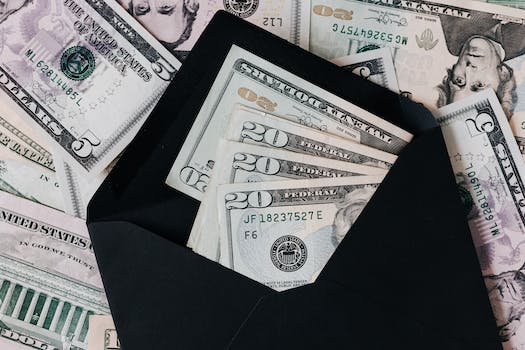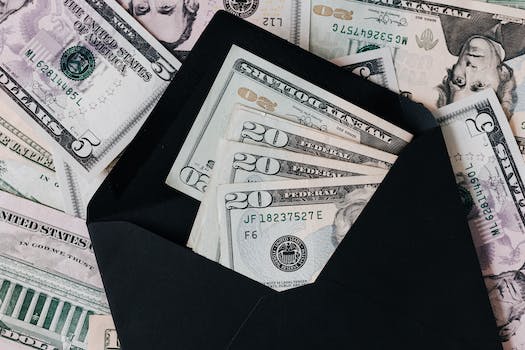How To Be Cheap And Save Money
“Frugal living for a richer life: Tips on how to be cheap and save money.”
Introduction
Introduction: Saving money is an essential aspect of financial stability. Being cheap doesn’t necessarily mean being stingy or depriving oneself of basic needs. It means being mindful of expenses and finding ways to cut costs without compromising on quality. In this article, we will discuss some practical tips on how to be cheap and save money.
10 Tips for Frugal Living
Are you tired of living paycheck to paycheck? Do you want to save money but don’t know where to start? Being frugal doesn’t mean you have to sacrifice your quality of life. In fact, it can help you live a more fulfilling life by allowing you to focus on the things that truly matter. Here are 10 tips for frugal living that can help you save money and live a more fulfilling life.
1. Create a budget
The first step to being frugal is to create a budget. This will help you keep track of your expenses and identify areas where you can cut back. Start by listing all of your monthly expenses, including rent, utilities, groceries, and entertainment. Then, compare your expenses to your income and see where you can make cuts.
2. Cook at home
Eating out can be expensive, especially if you do it frequently. Instead, try cooking at home. Not only is it cheaper, but it’s also healthier. You can also meal prep for the week to save time and money.
3. Shop at thrift stores
Thrift stores are a great place to find affordable clothing, furniture, and household items. You can often find high-quality items for a fraction of the cost of buying new.
4. Use coupons
Coupons can help you save money on groceries, household items, and even entertainment. You can find coupons online or in your local newspaper.
5. Cut back on subscriptions
Do you really need that gym membership or streaming service? Take a look at your subscriptions and see where you can cut back. You can also share subscriptions with friends or family to save money.
6. Use public transportation
If you live in a city with public transportation, consider using it instead of driving. It’s often cheaper and can save you money on gas and parking.
7. Buy generic
Generic brands are often just as good as name brands, but they’re much cheaper. Try buying generic groceries and household items to save money.
8. DIY
Instead of paying someone to do something for you, try doing it yourself. You can learn how to fix things around your house or even make your own cleaning products.
9. Plan ahead
Planning ahead can help you save money in the long run. For example, if you know you’re going to need a new car in a few years, start saving now. You can also plan your meals for the week to avoid impulse buys at the grocery store.
10. Find free entertainment
Entertainment doesn’t have to be expensive. Look for free events in your community, such as concerts or festivals. You can also borrow books and movies from the library instead of buying them.
Being frugal doesn’t mean you have to sacrifice your quality of life. By following these tips, you can save money and live a more fulfilling life. Remember, it’s not about being cheap, it’s about being smart with your money.
How to Create a Budget and Stick to It

Are you tired of living paycheck to paycheck? Do you want to save money but don’t know where to start? The first step to being cheap and saving money is creating a budget and sticking to it.
Creating a budget may seem daunting, but it’s actually quite simple. Start by listing all of your monthly expenses, including rent/mortgage, utilities, groceries, transportation, and any other bills you may have. Next, subtract your expenses from your monthly income. The amount left over is what you have to work with for savings and discretionary spending.
Once you have a budget in place, it’s important to stick to it. This means being mindful of your spending and making adjustments as needed. For example, if you find that you’re spending too much on dining out, try cooking at home more often. If you’re overspending on entertainment, look for free or low-cost activities in your area.
One helpful tool for sticking to your budget is tracking your expenses. This can be done using a spreadsheet, a budgeting app, or even just a pen and paper. By keeping track of every dollar you spend, you’ll be able to see where your money is going and make adjustments as needed.
Another way to save money is by cutting back on unnecessary expenses. This could mean canceling subscriptions you don’t use, shopping around for cheaper insurance rates, or even downsizing to a smaller living space. It’s important to be honest with yourself about what you truly need versus what you want.
When it comes to saving money, every little bit counts. One easy way to save is by automating your savings. Set up a direct deposit from your paycheck into a savings account, or use a savings app that rounds up your purchases and puts the extra change into savings.
It’s also important to have a plan for unexpected expenses. This could mean setting up an emergency fund or having a credit card with a low interest rate for emergencies only. By having a plan in place, you’ll be less likely to dip into your savings or go into debt when unexpected expenses arise.
Finally, don’t forget to celebrate your successes along the way. Whether it’s reaching a savings goal or sticking to your budget for a month straight, take time to acknowledge your accomplishments and reward yourself (in a budget-friendly way, of course).
In conclusion, creating a budget and sticking to it is the first step to being cheap and saving money. By tracking your expenses, cutting back on unnecessary expenses, automating your savings, and having a plan for unexpected expenses, you’ll be well on your way to financial freedom. Remember to be patient with yourself and celebrate your successes along the way. Happy saving!
Ways to Save Money on Groceries
Are you tired of spending a fortune on groceries every month? Do you want to learn how to be cheap and save money? Well, you’re in luck! In this article, we’ll be discussing some simple yet effective ways to save money on groceries.
Firstly, it’s important to plan your meals in advance. This means creating a weekly or monthly meal plan and sticking to it. By doing this, you’ll be able to make a shopping list of only the items you need, which will prevent you from buying unnecessary items. Additionally, planning your meals in advance will allow you to take advantage of sales and discounts, as you’ll know exactly what you need to buy.
Another way to save money on groceries is to buy in bulk. This is especially useful for non-perishable items such as rice, pasta, and canned goods. Buying in bulk can save you a significant amount of money in the long run, as you’ll be paying less per unit. However, it’s important to only buy what you need and to make sure that the items you’re buying in bulk won’t expire before you have a chance to use them.
Shopping at discount stores and using coupons can also help you save money on groceries. Discount stores such as Aldi and Lidl offer a wide range of products at lower prices than traditional supermarkets. Additionally, using coupons can help you save money on specific items or even your entire grocery bill. You can find coupons in newspapers, online, or through loyalty programs offered by supermarkets.
When shopping for groceries, it’s important to compare prices and brands. Don’t assume that the most expensive brand is always the best. Often, cheaper brands offer the same quality as their more expensive counterparts. By comparing prices and brands, you can save money without sacrificing quality.
One of the biggest ways to save money on groceries is to avoid buying pre-packaged and processed foods. These items are often more expensive than fresh produce and can be unhealthy. Instead, opt for fresh fruits and vegetables, which are not only cheaper but also healthier. Additionally, cooking from scratch can save you money and allow you to control the ingredients in your meals.
Finally, it’s important to avoid food waste. This means only buying what you need and using up leftovers. By doing this, you’ll not only save money but also reduce your environmental impact. You can also freeze leftovers for later use or use them to create new meals.
In conclusion, there are many ways to save money on groceries. By planning your meals in advance, buying in bulk, shopping at discount stores, using coupons, comparing prices and brands, avoiding pre-packaged and processed foods, and avoiding food waste, you can significantly reduce your grocery bill. So, why not give these tips a try and see how much money you can save?
DIY Home Repairs to Save Money
Are you tired of spending a fortune on home repairs? Do you want to learn how to be cheap and save money? Well, you’re in luck! In this article, we’ll be discussing some DIY home repairs that can help you save money.
Firstly, let’s talk about fixing leaky faucets. A dripping faucet can waste a lot of water and money over time. Luckily, fixing a leaky faucet is a relatively easy DIY task. All you need is a wrench, some plumber’s tape, and a replacement washer. Turn off the water supply to the faucet, remove the handle, and replace the washer. Reassemble the faucet and turn the water supply back on. Voila! You’ve just saved yourself some money on your water bill.
Next up, let’s talk about unclogging drains. Clogged drains can be a real pain, but you don’t need to call a plumber every time it happens. There are a few DIY methods you can try before resorting to professional help. One method is to use a plunger. Simply place the plunger over the drain and plunge up and down vigorously. Another method is to use a mixture of baking soda and vinegar. Pour a cup of baking soda down the drain, followed by a cup of vinegar. Let it sit for a few minutes, then pour boiling water down the drain. If these methods don’t work, you can try using a drain snake to remove the clog.
Moving on, let’s talk about painting. Painting your home can be a great way to freshen up the look of your space without spending a lot of money. However, hiring a professional painter can be expensive. Luckily, painting is a DIY task that anyone can do. All you need is some paint, a brush or roller, and some painter’s tape. Before you start painting, make sure to clean the walls and patch any holes or cracks. Use the painter’s tape to protect any areas you don’t want to get paint on. Then, start painting! It may take some time and effort, but the end result will be worth it.
Lastly, let’s talk about fixing squeaky doors. Squeaky doors can be annoying, but they’re also a sign that your door needs some maintenance. Luckily, fixing a squeaky door is a simple DIY task. All you need is some lubricant, such as WD-40 or vegetable oil. Simply spray or apply the lubricant to the hinges and move the door back and forth to distribute it evenly. If the squeaking persists, you may need to tighten the screws on the hinges or replace them altogether.
In conclusion, there are many DIY home repairs that can help you save money. From fixing leaky faucets to painting your home, these tasks are easy to do and can make a big difference in your home. So, the next time you’re faced with a home repair, don’t be afraid to try doing it yourself. You might just surprise yourself with how much money you can save.
The Benefits of Secondhand Shopping
Are you tired of constantly feeling like you’re living paycheck to paycheck? Do you want to save money but don’t know where to start? Well, look no further! One of the easiest ways to save money is by shopping secondhand.
The benefits of secondhand shopping are numerous. First and foremost, it’s cheaper. You can find gently used items for a fraction of the cost of buying them new. This is especially true for big-ticket items like furniture and electronics. Plus, you can often negotiate the price with the seller, which can save you even more money.
Secondhand shopping is also environmentally friendly. By buying used items, you’re keeping them out of landfills and reducing the demand for new products. This means less energy and resources are used to produce new items, which is better for the planet.
Another benefit of secondhand shopping is the thrill of the hunt. There’s something exciting about searching for that perfect item at a thrift store or garage sale. It’s like a treasure hunt, and when you finally find what you’re looking for, it’s incredibly satisfying.
So, how do you get started with secondhand shopping? The first step is to figure out what you need. Make a list of the items you’re looking for, and prioritize them based on what you need most. This will help you stay focused when you’re shopping and avoid impulse buys.
Next, do your research. Look up local thrift stores, consignment shops, and garage sales in your area. Check out online marketplaces like Craigslist and Facebook Marketplace. You can also search for specific items on eBay or other online marketplaces.
When you’re shopping secondhand, it’s important to keep an open mind. You may not find exactly what you’re looking for, but you might find something even better. Be willing to compromise on things like color or style, and think creatively about how you can repurpose items.
When you’re shopping, be sure to inspect items carefully before you buy them. Check for any damage or wear and tear, and make sure everything is in working order. If you’re buying electronics, test them out before you buy them to make sure they work properly.
Finally, don’t be afraid to negotiate. Many sellers are willing to haggle on price, especially if an item has been sitting on their shelf for a while. Be polite but firm, and don’t be afraid to walk away if you can’t agree on a price.
In conclusion, secondhand shopping is a great way to save money and be environmentally friendly. By doing your research, keeping an open mind, and being willing to negotiate, you can find some amazing deals on gently used items. So, the next time you need something, consider shopping secondhand. You might be surprised at what you find!
Conclusion
Conclusion: Being cheap and saving money requires discipline, planning, and a willingness to make sacrifices. By creating a budget, cutting unnecessary expenses, and finding ways to save on everyday purchases, anyone can become more financially responsible and achieve their financial goals. It may not always be easy, but the long-term benefits of being frugal and saving money are well worth the effort.




